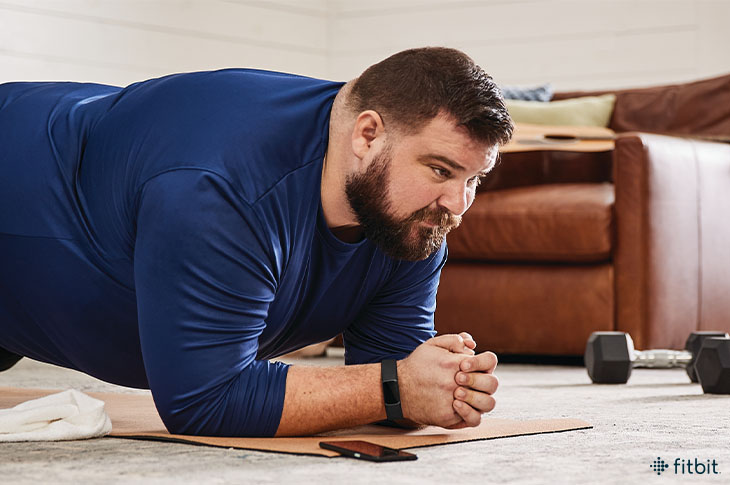
It’s no secret that the virtual fitness industry is having more than just a moment. When the pandemic hit back in 2020, people relied on virtual workouts and at-home exercise equipment to get their sweat on, which accelerated the exercise-from-home trend that had been slowly growing for years.
Now, what was a necessity during the peak of the pandemic has become a blessing to many due to the major benefits that come along with it. Even as gyms begin to reopen or readjust regulations across the country, the at-home, virtual workout is proving that it’s here to stay as people are opting for a more hybrid approach to their fitness routines.
“Virtual fitness is here to stay because you can’t beat the convenience,” says Emily Diers, founder of bodycraft. “It allows you to put a trainer in your pocket while you travel. It serves up inspiration in a moment’s notice when you need it. However, we are a communal species so we will continue to gather in person and feed off that live energy, but virtual fitness opens up more options and flexibility.”
So, are virtual workouts going to be a part of the future of fitness? Keep reading to learn how the industry is adapting, the benefits of virtual workouts, and why experts believe they’re here to stay.
How is the virtual fitness industry adapting?
The pandemic shook up our lifestyles in many ways, including the way we stay active. Now that working out online has hit mainstream, the virtual fitness industry is adapting. For example, whether it’s between virtual meetings, childcare responsibilities, or a tight schedule, people are squeezing in exercises whenever they can, even if it’s just a quick 15-minute HIIT workout. As a result, we’re seeing shorter, yet harder virtual sessions become available.
“I see that folks are looking to maximize their time more and reach for shorter, more efficient workouts,” says Diers. “Virtual fitness has the flexibility to offer bite-sized classes in the 5 to 15-minute range so people can take them on when it’s convenient for them.”
Fitness companies have also teamed up with health and fitness wearables. “Some virtual fitness companies have increased their level and value of service by adding live coaching sessions via video chat and adding mobile apps to their service platform with automatic synchronization to wearable technologies like Fitbit,” explains Michael S. Parker, founder and CEO of Forge Fitness & Nutrition Coaching. Here at Fitbit, we’re equally as excited about this as we love to bring you the best and newest trends and exercises via the Fitbit app.
What are the benefits of virtual workouts?
Convenience. Perhaps the most powerful attraction of virtual workouts is the convenience factor. “Clients are now able to work out any time, anywhere, which takes away the barriers of commuting, lack of equipment, scheduling, etc.,” says Brady Dougherty, personal trainer.
So instead of running across town to a gym or studio class, people can just open their phone or computer between work meetings, shifts, or busy schedules to get in their activity of the day. “Now someone can get an amazing workout in, jump in the shower, and hop on a meeting, all in under 30 minutes,” says Diers. “They can do a full workout while the baby naps. If they wake up late, they can still find time to do a short 10-minute stretch.”
Exercise from anywhere. No matter where you go, you’ll always have the option to get your heart rate up. “We tend to think traditionally that we need to go to a gym, fitness class, or hire a live trainer,” says Parker. “The pandemic forced people to find alternatives and now that virtual training has become common and accepted, most people will stick with the comfort and convenience of these kinds of services because they are seeing results from them.”
Exercise options. The virtual fitness world unlocks access to an endless amount of workouts, which gives you the opportunity to switch things up and keep your workout routine fun and fresh. Whether it’s HIIT, yoga, cycling, strength training, dance, or kickboxing, there’s something for everyone for any type of mood you’re in on a given day.
Improves confidence. While there are numerous reasons why people opt for an at-home workout, building confidence is one that is more commonplace than you’d think. Exercising from the comfort of home offers a sense of security and safety to those who may feel uncomfortable going to a fitness center.
“If we are shy about learning something new for example, or have body image issues, virtual fitness allows us to explore movement from the safety and comfort of home,” says Diers. “This can ease anxiety and build confidence and trust in our bodies at a safe pace.”
She says that tuning in virtually also strengthens our personal responsibility, reminding ourselves that we are capable and accountable. “The consistency of virtual training provides more mental clarity, regulates our nervous systems, and signals to ourselves that we are worthy of being shown up for. All of which brings about that warm inner glow of being in tune with ourselves.”
In conclusion, although your brick and mortar gyms and studios aren’t going anywhere, they’re officially making room for virtual workouts in the fitness world.
This information is for educational purposes only and is not intended as a substitute for medical diagnosis or treatment. You should not use this information to diagnose or treat a health problem or condition. Always check with your doctor before changing your diet, altering your sleep habits, taking supplements, or starting a new fitness routine.

If you have questions about a Fitbit tracker, product availability, or the status of your order, contact our Support Team or search the Fitbit Community for answers.
Please note: Comments are moderated and may not appear immediately after submission.